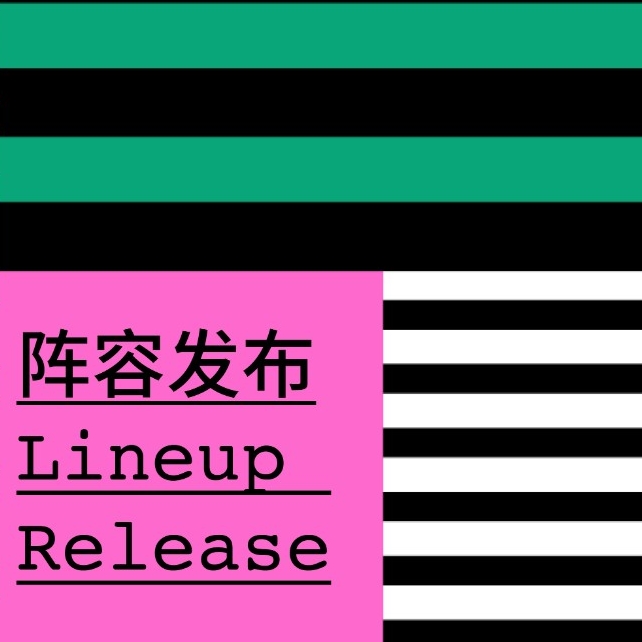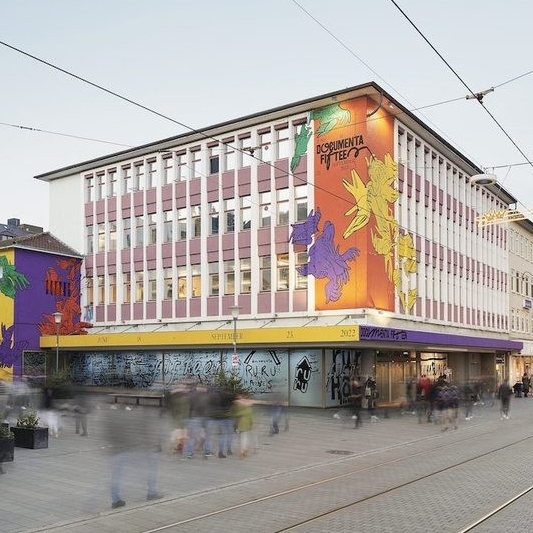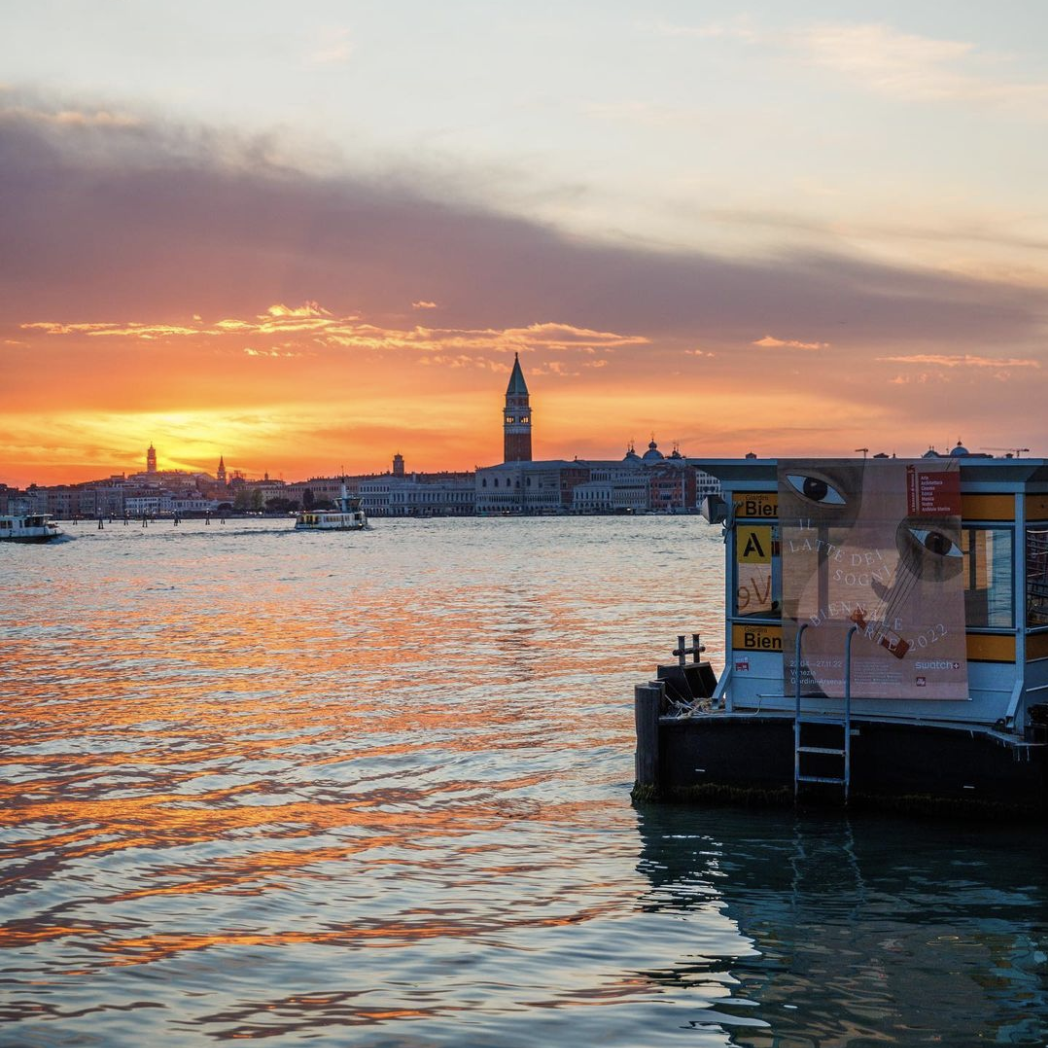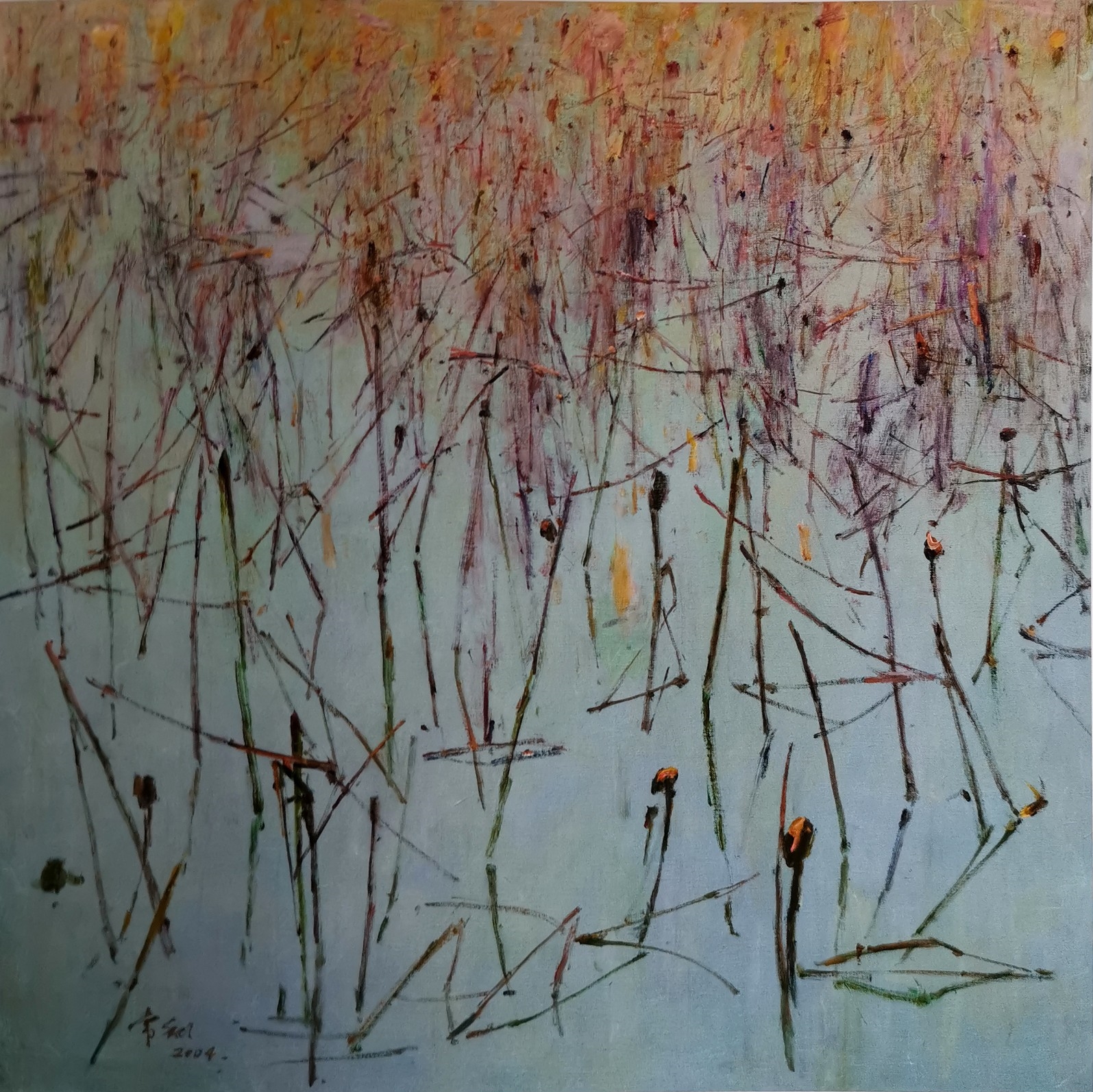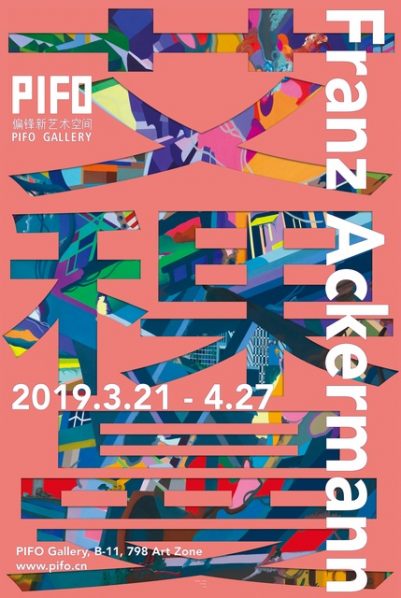
Franz Ackermann was born in 1963. He was awarded a scholarship from the German Academic Exchange Service (DAAD) in 1990, he is well-known for the psychedelic, vibrant paintings and immersive installations. His works have been shown in numerous international exhibitions and are kept in major museums such as the Museum of Modern Art, in New York. Franz Ackermann is considered as one of the most active and influential artists in the world.
Franz Ackermann travels extensively. Much of his inspiration comes from this. His first extended trip brought him to Hong Kong, then Manila, Jakarta over to Singapore, Kuala Lumpur, and Bangkok, then to Cambodia and up the coast of Vietnam on a bus to Saigon. From there via Guangzhou and Guilin back to Hong Kong. Onwards by boat to Shanghai and from there to Beijing and back to Berlin using the trans-Siberian railroad. In between he spent extended periods of time in cities like Beijing, one month, or another month in Ulan Bator. The painting ´Cargo` in this exhibition was indeed inspired by visiting the harbor in Hong Kong.
Before anyone else, Franz Ackermann understood, that the globalized world is not uniform. Images, fashion and information travel very quickly around the world. But local life is deeply rooted in the traditions and essences of the regions. He spends time, looks at the little things and the large, the simple things and the complex. He travels light also, a note book, a camera, pencils and paper and creates, what he calls “Mental Maps” condensed memories of things he sees, and thoughts that impose themselves on him.
On his journeys he carries his small sketch books just 13 x 19 cm to ´digest` his experiences. The resulting ´Mental Maps` are not sketches or notations. Franz Ackermann views them as fully formulated art works that entail all the pictorial complexity. He begins working on them onsite and continues until they are finished sometimes months later when he is already home again.
In a true sense of the word, the 'Mental Maps' are nomadic art, when the rest of the painters pretty much lead very settled lives, working in huge studios. Ackermann does both, but he weaves space and time, the distances travelled, the time spent, the experiences made into his intricately composed art works that conflate temporal and spatial elements so they appear present.
The structure of his paintings is similar to how our memory works. Sometimes a memory comes to you, sometimes you have to retrieve it. But everything is there simultaneously and incongruently at once. Nothing is in a temporal order, or strictly photographic. To revisit our memories, we always must first untangle all the folded-in details, sights, sounds, smells and also retrieve the emotional and intellectual charges our memories are transporting. So in a sense the conflation of what can be seen on Franz Ackermann´s paintings is parallel to our human way of encrypting experience into memory and also as we are constantly re-editing our memories.
Ackermann combines a very outward-oriented curiosity with the ability to weave the complexities of a globalized world into intricately composed images that represent the inner reality of the artist's mind. The paintings then offer themselves to an audience, inviting them to enter and travel in them.
About the artist
Franz Ackermann was born in Neumarkt-sankt Veit, Germany in1963, lives and works in Berlin and Karlsruhe. Franz Ackermann studied at Academy of Fine Arts, Munich during 1984-88; University for Fine Arts, Hamburg from 1989-91. He awarded DAAD (German Academic Exchange Service) in 1990, grant to Hong Kong in 1991. Since 2001, he has been appointed as the professor of Academy for Fine Arts Karlsruhe. Franz Ackermann has been active as a painter, printmaker and installation artist since the early 1990s. His oeuvre comprises drawings, watercolors, murals, paintings and installations, which he partially extends by photographic works, projections and architectural models. His works centered on themes of tourism, globalization and urbanism, had reflected the social changes and political issues wrought by increasing globalization and the resulting cultural homogenization.
In 1997 Franz Ackermann received the Art Prize from the city of Nordhorn for the redesign of the Munich subway station "Georg-Brauchle-Ring" (2003), and awarded a “Hugo Boss” nomination in 2004, and in the next year he was honored with the award "mfi Preis Kunst am Bau". His works have been shown in numerous international exhibitions and are kept in major museums and collections, such as the Venice Biennale in 2003 and exhibited extensively including the Museum of Contemporary Art, New York; Tate Modern, London; Whitney Museum of American Art, New York; Kunsthalle Bonn; Kunsthalle St Gallen, Switzerland and Irish Museum of Modern Art, Dublin. His works are held in the collection of the Museum of Modern Art, New York; Museum of Contemporary Art Los Angeles, USA; Kunstmuseum Wolfsburg, Germany; Stedelijk Museum, Amsterdam etc,.
About the exhibition
Dates: 21 MARCH - 27 APRIL 2019
Venue: PIFO Gallery
Courtesy of the artist and PIFO Gallery, for further information please visit https://pifo.cn.


